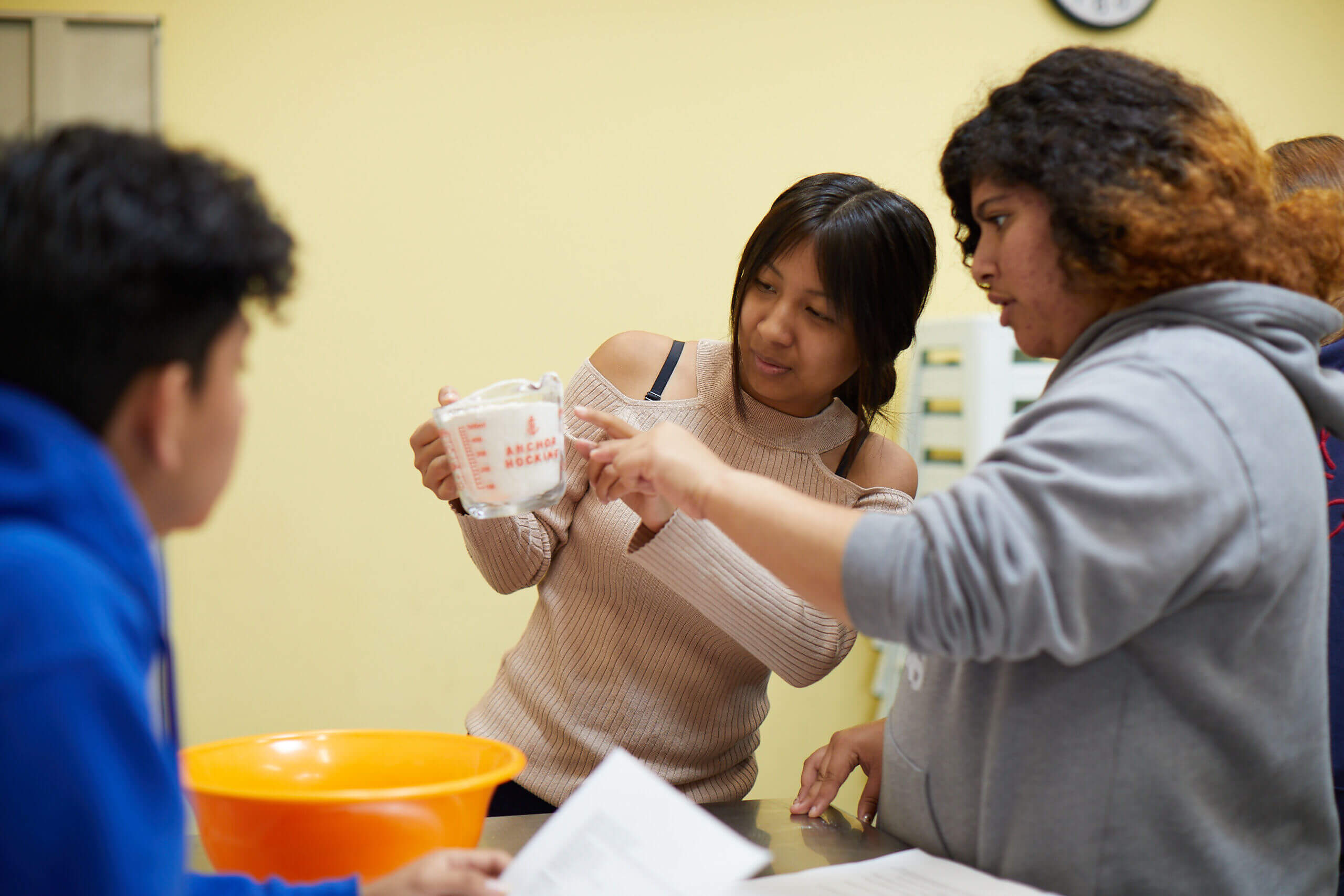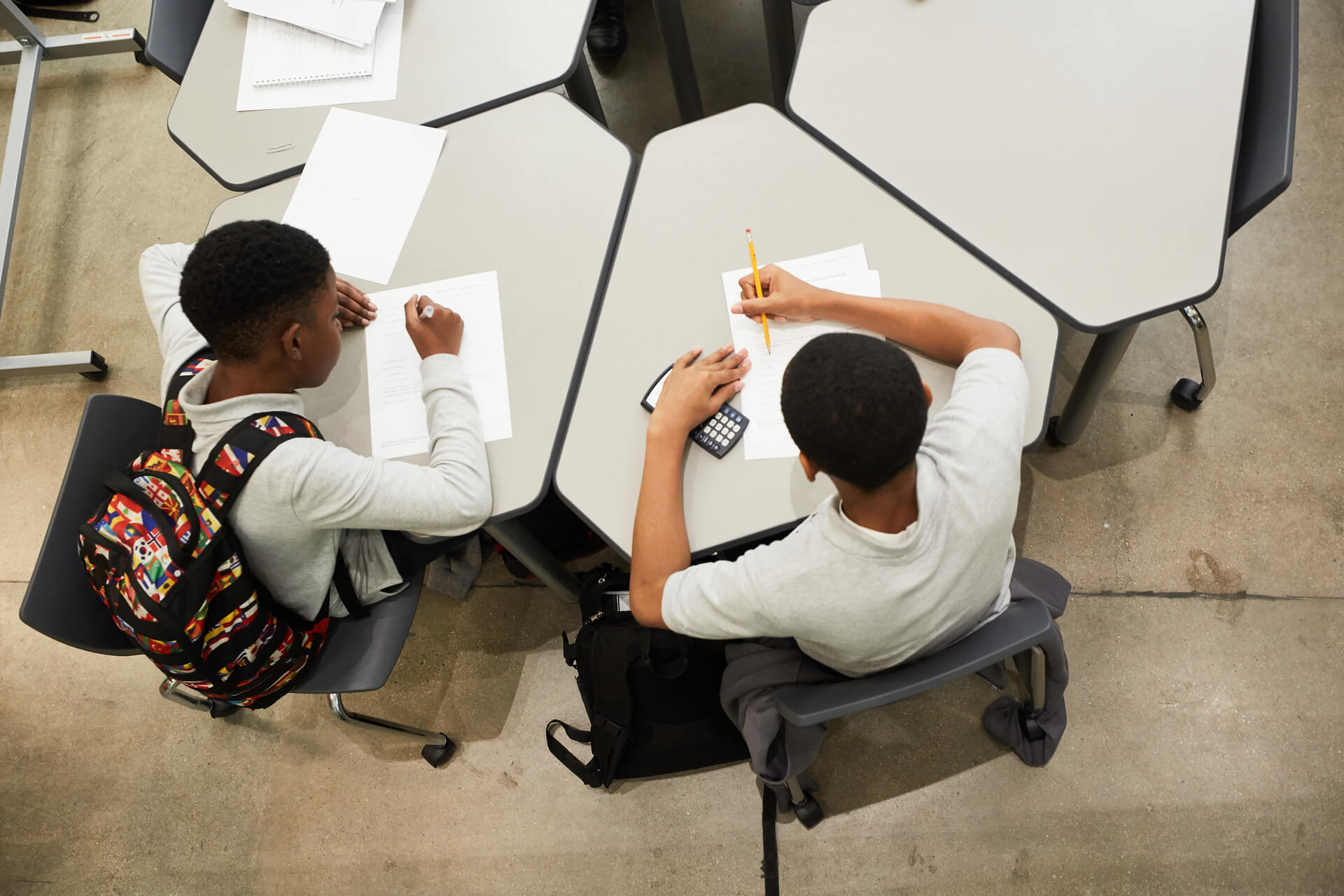How to Teach Peer Feedback Between Students
Your students arrive to class, ready to turn in the final draft of their English assignment.

Your students arrive to class, ready to turn in the final draft of their English assignment. Instead of collecting dozens of essays to read and grade, you ask your students to turn to a neighbor and exchange papers. Suddenly, students are sharing notes about what worked well and what needs improvement, comparing and contrasting viewpoints, and sparking new ideas in their classmates.
While students expect to receive grades and comments from their teachers, when they are in charge of evaluating each other, there’s an opportunity for even more engaging and impactful learning. It’s called peer feedback.
A valuable strategy for educators, peer feedback fosters “a structured learning process for students to critique and provide feedback to each other on their work,” as defined by Cornell University’s Center for Teaching Innovation. It’s a collaborative process that encourages students to think and read critically, apply their learning to an evaluation model, and refine their communication skills.
At XQ, we believe in keeping student engagement at the forefront of learning. We’ve even made student voice and choice one of our Design Principles for schools. By providing classroom opportunities for students to direct and lead their learning, students build the skills to become self-aware team members and learners for life. These are two of the research-based XQ Learner Outcomes that can help them graduate ready for college and careers and become inquisitive world citizens.
Providing quality feedback does not happen accidentally and is a complex skill for students to master. Students must understand what quality work looks like and how to encourage their peers to revise errors they may have made. These aren’t innate skills for most students. Most are conditioned to view teachers as the sole proprietors of subject knowledge and expertise.
To create future-ready young adults, we need to reinforce independent thinking skills and build confidence. Peer feedback is one such skill, and teaching it to your students can be an extremely rewarding endeavor and one that will serve them well throughout school and life. This article focuses on defining peer feedback, how it helps support students, and how teachers can strategically integrate it into their classroom.
The importance of giving and receiving feedback
Feedback is essential for growth of any kind. Whether you’re an aspiring chef, a rookie athlete, a medical student, or a high school student, learning what you’re doing right and where you can improve is essential for everyone to experience.
Researchers have long known that social interaction is critical to learning and aiding in the process of cognitive development. We know students need time to share ideas with each other, and feedback from peers is one way to make that happen. Research has shown that students learn exceptionally well from one another, and in peer feedback activities, students can learn and correct errors in their own work.
Peer feedback also gives students a measure of control over their learning, creating a collaborative experience that places students at the center of the assessment process to evaluate what is good, what needs improvement, and how to push themselves forward. When done right, peer feedback can promote collegiality, competency, and comprehension.
We know there is an inherent power dynamic between teachers and students; they look to us for support, but we want them to learn how to think independently. Asking students to identify mistakes and then revise is a crucial metacognitive skill, and peer feedback is a strategy that both removes that power dynamic and reinforces social collaboration.
Learning how to provide feedback for others helps students improve their reading, writing, and communication skills. As researchers William Grabe and Robert Kaplan have noted, responding to peer feedback and providing suggestions helps students identify problem areas in their work.
But, of course, not all feedback is created equal. It is important that teachers model for students what quality feedback looks like and how to provide it in a constructive manner. For feedback to have a positive impact, it needs to encourage growth. There are a few key characteristics of effective feedback that teachers and students should practice developing.
- Accentuate the Positive: Helpful feedback shares with students both what they did incorrectly as well as what they did correctly. Focusing only on the areas someone got wrong can easily create a feeling of defeat, so it is vital to note parts of an assignment that work well.
- Keep it Timely: Whether it’s a grade on a test or detailed comments on a project, students are more apt to remember positive criticism and are more likely to respond promptly.
- Differentiate Feedback: Remember that your students are unique. While some might need a push to reach their potential, others might need more guidance to avoid losing confidence.
What this looks like in the classroom depends on the teacher, but a common practice involves a series of low-stake tasks that get students thinking together. XQ Senior Writer Edward Montalvo, a former high school teacher at PSI High, an XQ Superschool in Sanford, Florida, told us that he had students practice feedback strategies regularly in his English classroom.
“To support composition skills, I would partner students up in small writing groups where they would have their responses reviewed by each member,” Montalvo recalled. “Students would also rotate through different editorial roles to improve their writing skills, focusing on structure, context, and syntax in separate responses. It helped students practice all the valuable skills, and the model can be adapted even in STEM classrooms.”

Identifying helpful and unhelpful feedback
Peer feedback is not an innate ability for students. As with any new skill, teachers need to be explicit when modeling what effective feedback looks like.
Mark Gardner, a high school English teacher in Washington State, writes about using peer feedback. Before students can dive into critiquing each other’s work, Gardner first has to define and teach his students what effective feedback looks like and how to give it.
Gardner provides a useful acronym that his students can remember: SPARK. This framework can guide students as they think about helpful versus unhelpful feedback. The five characteristics of SPARK are:
- Specific—Feedback is linked to specific words, phrases, or sentences.
- Prescriptive—Feedback offers a solution, with possible revisions or recommendations for helpful resources or examples.
- Actionable—Feedback provides students with a clear understanding of what they must do to improve.
- Referenced—Feedback ties into the assignment’s criteria, requirements, or skills.
- Kind—Above all else, feedback should be framed in a supportive and thoughtful way.
Some students might think simply writing “Good job!” next to a paragraph they like constitutes helpful feedback, but it’s important to underscore that constructive feedback is both specific and helpful. This strategy shows students exactly what constructive criticism looks like and also requires students to name aloud what works and what doesn’t.
To begin with, teachers can model feedback with student-produced samples and have students practice along with them. Teachers can also gather how feedback was provided in their various classes and ask students to identify which examples were effective.
One way to ensure that feedback is useful for students is by including a positive comment along with their critique, such as, “Your opening paragraph includes a good hook, but I was unclear about your thesis statement.” Students benefit from knowing what works, which builds confidence and resiliency as they tackle revision.
Examples of effective peer feedback
Peer feedback can be as simple as pairing students with one another to review their work and provide constructive critiques. But there are also several ways to mix up the formula. Combining these strategies can help support social dynamics. Some effective examples include:
Think-Pair-Share
A collaborative learning strategy, Think-Pair-Share asks students to work together in small groups to analyze a single concept. The teacher asks an open-ended question; then students think about it individually before coming together to share their thoughts. This is a great way to get students comfortable sharing their opinions and developing their communication skills. You can also use think-pair-share to support students who might feel intimidated sharing in a larger setting.
Gallery Walks
Gallery walks are a great way to get students moving and actively engaging with their classmates. In a gallery walk, students display a piece of work—such as a poster they’ve created or an essay they’ve written—and circulate through the classroom, spending a few minutes at each display to observe and discuss. Feedback can be left as comments as groups circulate, or students can take notes and reconvene in small groups after the walk.
The Socratic Circle
Based on the thinking of Greek philosopher Socrates, the Socratic Circle requires students to ask questions and work together to find meaning. In this method, all students read a text and then form separate outer and inner circles. The inner circle discusses the text through questions and answers. Meanwhile, the outer circle silently listens and takes notes on the discussion. When the inner circle is done, the outer circle provides feedback, and then the groups swap for the next text.
Strategies for effective peer feedback between students
Once you’ve modeled and practiced peer feedback with your students, it’s time to let them try it on their own. Here are a few strategies to guide students on providing helpful feedback.
Lay a foundation of safety and trust
While many high school students are accustomed to receiving feedback, that doesn’t mean they are comfortable receiving or giving it. In her research, Harvard psychologist Leah Somerville has shown that teens are hypersensitive to criticism and can become stressed or withdrawn when they feel judged. Establishing a safe and supportive classroom is key to incorporating student feedback.
Creating an environment for honest and constructive feedback between peers takes time and practice. When first starting out, some students may be wary about providing feedback. Allowing students to provide it anonymously can help alleviate these concerns. In the beginning, it might also be helpful for teachers to monitor feedback and provide suggestions for improvement with a structured feedback process.
Use a structured feedback process
Getting students to provide concrete feedback isn’t easy. At the beginning of an assignment or a project, provide students with a feedback rubric with clear examples of questions and helpful responses. Students can also help brainstorm ideas for the rubric, giving them more ownership of the expectations. The emphasis here should be on coherence and consistency.
One great prompt for deeper feedback is “I Like, I Wonder, Next Steps.” In this format, students write down one thing they like about the work, one thing they have a question about, and then one actionable suggestion of what to do next. That forces students away from the unhelpful “Great job!” and towards feedback that incorporates what worked well, what could have been done differently, and what is still unclear.
Set boundaries and expectations
Identifying the type of feedback students will provide is just as important as guiding how students give it. Before starting an assignment, remind students that their job is to reflect, not correct. For example, if students are critiquing a writing assignment, make sure they understand they aren’t copy editors looking for every syntax error. Instead, students should focus on the ideas and clarity of the writing. You might ask them to concentrate on just a few areas, such as how effectively an author incorporates quotations to support their argument.
In STEM classes, peer feedback can focus on the process rather than the results. If students are reviewing higher mathematical order problems, identifying how a student came to an answer rather than just whether or not it’s correct can help students build deeper mathematical reasoning skills.
Include a Debrief
Don’t just assume a peer review went well. After working in pairs or small groups, have students come back to debrief as a class to share what worked well and where they struggled. Or, have students submit a short reflection about their experience. Teacher Sean Cassel wrote a piece about peer review for Edutopia about discovering what students had to say during a check-in.
- “My partner’s essay was so much better than mine I didn’t feel like I could even help her.”
- “I didn’t want to hurt my partner’s feelings.”
- “There were so many mistakes, I didn’t know where to start.”
Cassel added that addressing concerns like hurting a partner’s feelings will help to foster a culture of constructive criticism and demonstrate to students how everyone can grow with the help of others while also learning to accept that imperfections are a part of life.
Conclusion
Feedback is crucial to academic growth, but it doesn’t just have to come from a teacher. When done right, feedback can be just as effective—and perhaps even more impactful for students—when coming from their classmates.
Providing opportunities for your students to practice giving and receiving feedback can help individual students and create a strong classroom culture where all students are more engaged in their learning and more trusting of one another.
More Resources for Teaching Peer Feedback in the Classroom
- A review assignment tool that allows students to read, review and evaluate papers submitted by classmates.
- Peer Feedback in the Classroom: Empowering Students to Be the Experts is a guide by National Board Certified Teacher Starr Sackstein.
- An interview with teacher Matthew Johnson, author of Flash Feedback, and how to provide meaningful feedback in less time.
- A sample lesson on inquiring into strategies for writing effective conclusions through peer review.
Photo at top of students at XQ school DaVinci RISE supporting each other in a lab, by Chris Chandler.









